Trading in a Diamond Ring – Is an Upgrade a Good Idea?
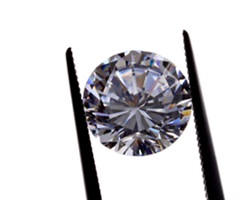
Is it worth it to upgrade your diamond ring?
Life’s been good and you had gotten better in life with more assets and disposable income. For couples who had begun their marriage together with a simple purchase, the concept of trading in your original ring for something bigger and better might be something you are considering.
And you aren’t alone.
In fact, there are many couples who reinforce and strengthen their relationship by upgrading the diamond in their engagement ring after years of marriage. There are also people who are looking to trade in their old diamond ring simply because their styles and preferences had changed.
Whatever the reason that you have for upgrading your engagement ring, it can be a tricky process to navigate. In this write up, we are going to show you how you can get the best value for your diamond ring and reveal the best diamond dealers when it comes to trading in a diamond.
Here is a list of topics we will be covering:
What is a Diamond Upgrade or Trade In?
In layman terms, trading in your diamond is the act of giving your diamond back to a jeweler, paying some money and getting a better (and usually larger) diamond in exchange.
When Might Trading In Your Diamond For an Upgrade Be a Good Idea?
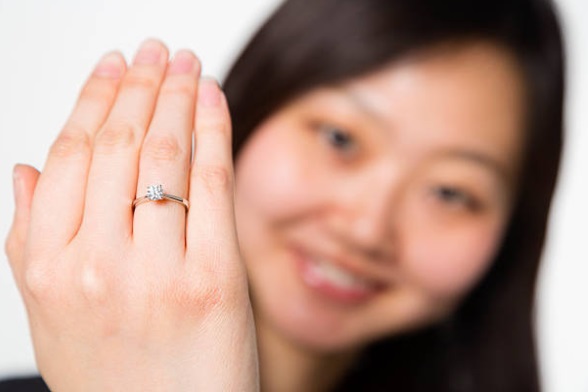
Looking to upgrade to a bigger sized diamond when you feel the current one is too small?
I think it is only human nature to want something different at various points in time. Here are some common reasons why people choose to upgrade their diamond jewelry:
1) Ring designs that go out of style and changes in personal tastes. For example, the 3 stone ring setting is a design that is recently made popular by Meghan Markle but may lose its appeal with the passage of time. New manufacturing methods have also enabled bold looking designs like tension settings to be created and constant innovation is always changing up the landscape of the jewelry industry.
2) Reflecting your current social status. As mentioned earlier, some people may want to upgrade to a bigger-sized diamond to show off their status and wealth. Interestingly, there are some people who choose to keep the original setting and simply swap out the main diamond for sentimental reasons.
3) A thirst for new diamond shapes. In the past decades, shapes like the marquise and ovals were all the rage. However, the popularity and demand for these shapes had appeared to die down in recent times. If you want a change of style, one of the easiest ways to do this is to trade in your diamond for another shape.
In recent years, proprietary diamond cuts like the Solasfera and cushion Hearts And Arrows are some of the head-turning designs that had hit the market. If you are drawn towards some of these unique cuts, you may want to consider upgrading your current jewelry into one of these diamonds.
Click the image above to check out this one-of-a-kind diamond design.
4) Dealing with old estate jewelry and heirlooms. Traditionally, jewelry is often passed down from one generation to another. For some people, trade-ins can offer the opportunity to turn old jewelry into contemporary designs that better match current lifestyles.
Whatever your reasons for doing a trade-in, remember there are always two sides to every coin. While getting a bigger diamond as a representation of a stronger commitment to a loved one is beautiful as a concept, the change also involves getting rid of the original stone which may have sentimental value attached to it.
5) Out with the old and in with the new. Buying a new diamond for a gift (e.g. major anniversary or life event) also represents a big expense and an entirely new jewel. Instead of having a new diamond to wear and keeping the older ring in your drawer, an upgrade might be a better option as a “continuation” of your previous one.
Where to Upgrade or Trade In Your Diamond Ring?
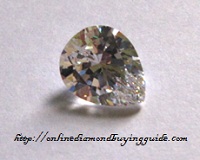
Most jewelry stores usually offer some sort of upgrade policies for customers. In fact, most jewelers will even promote the idea of having you trade-in your diamond ring in the future.
Why???
Well, it’s all about the money ($$$). By offering upgrade policies, it gives the jeweler an opportunity to do future business with an existing customer.
In general, the best place to upgrade your diamond engagement ring would be at the place where you bought your initial purchase from. On this note, I want to highlight the point that different jewelers have different policies and the devil is always in the details.
Here are some examples of common trade-up programs offered in the industry:
Mervis Diamond Importers – http://www.mervisdiamond.com/100-lifetime-trade-up-policy
Robbins Brothers – https://www.robbinsbrothers.com/shipping-returns-policy#tradeup
Shane Co. – http://www.shaneco.com/About/UpgradeTradeIn.htmx
Whiteflash – http://www.whiteflash.com/about-diamonds/jewelry/lifetime-upgrade.htm
The huge majority of diamond vendors have trade in policies in place but that doesn’t mean they are all good policies. This is especially true with brick and mortar retailers where they seemingly offer “full value” upgrades where you can get a credit for the original purchase price.
For example, let’s assume that you purchased a $5000 diamond ring from Zales where they have a lifetime trade-in program and you are required to spend twice the price ($10000) you paid for your original purchase.
On the surface, many consumers may think this is a good way to get “full value” for your purchase but you will end up overpaying for the new diamond because the goods sold at Zales are excessively overpriced to begin with.
Compared to buying from brick and mortar retailers like Zales, you can easily get an identical (or better) quality diamond ring for less than half the price with the list of online vendors here.
By forcing yourself to upgrade with a mediocre vendor you purchased your initial ring from, you are throwing good money after bad and digging yourself a bigger hole when buying a new diamond that’s going to be overpriced as well.
The important thing to note when doing trade-ins is that you need to factor in the amount the jeweler is charging for the new stone and how much “discount” you are really getting.
Vendors With Exemplary Sales And Upgrade Policies
White Flash – Most trade-up programs offered by jewelry retailers often come with restrictions, legal jargon and specific requirements (e.g. need to spend 2X more or even higher carat/color/clarity ratings). With White Flash, you don’t get any nonsense like this and they make it really simple.
White Flash allows you to trade in a diamond at any time for any other in-house diamond with equal or greater value. That means even if you choose to spend $1 more, that’s perfectly fine with them.
James Allen – They offer a lifetime upgrade program where diamonds can be exchanged for a 100% credit towards any replacement diamond that is at least 2 times or greater in value. Now, this is very similar to the majority of trade up policies that many jewelers have.
However, what makes James Allen stand out is their competitive prices and wide-selection of GIA/AGS certified diamonds. On top of that, their 360 video technology allows you to verify and scrutinize the diamond you are buying. In the diamond industry, you don’t get this level of transparency and consumer orientated service.
What Are Options Available Besides Taking the Scenic Route?
What happens in the event that you choose to do your upgrading with a different jeweler? Some stores may allow you to do this by giving you credit towards a new purchase. Some other jewelers may charge you a fee for the deal or probably give you a lowball offer.
Why? When a jeweler accepts a buyback or upgrade deal, the jeweler assumes some risks in this new undertaking. This is because some of their cash flows and capital will be tied up with this newly acquired diamond and there’s a probability that the diamond may not sell.
If you are willing to take the hassle, there are other methods that can help you save that fee or get better value out of your unwanted diamond jewelry. By selling your diamond independently, you might be able to recover a bigger portion of the cash paid for the purchase. Thereafter, you can also have the freedom to work with anyone for your new purchase.
Summary And Final Thoughts

When you are looking to trade in a diamond, I’m sure you want to get the highest value possible instead of getting ripped off by a scumbag jeweler. The key to doing this is to choose a reliable and honest jeweler.
And this goes all the way back to whom you buy your jewelry from in the first place. If you made your purchase from a reputable diamond vendor that offers rock-solid upgrade policies, the trade-in process would be painless and straightforward.
That’s why it is important to choose a jeweler you want to work with for the long term before spending a fortune on your first purchase.
Related Articles
Leave A Comment

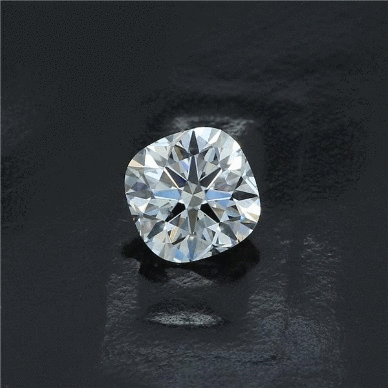
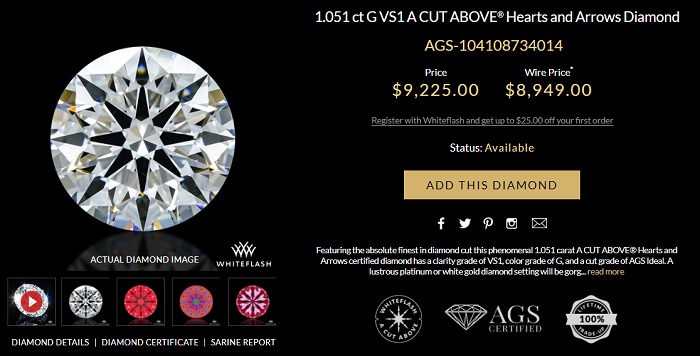
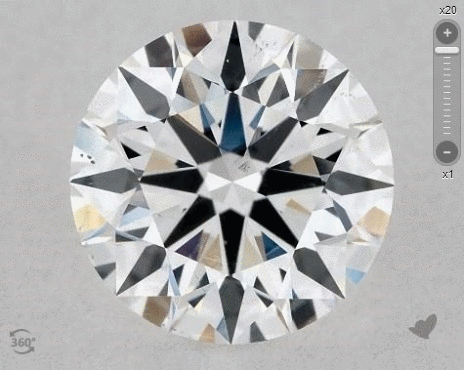
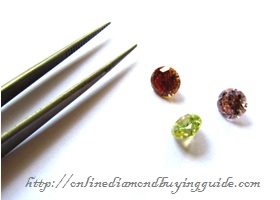

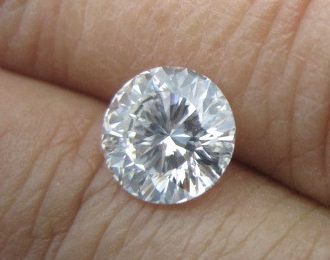
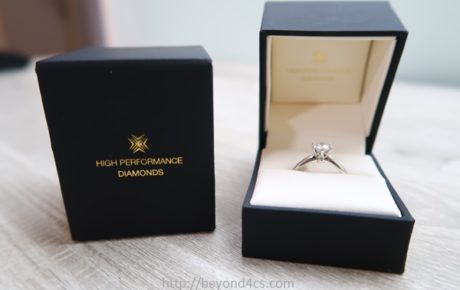









12 Comments
Hi Paul,
I got James Allen to provide their in-house gemologist’s opinion on the D color 2.142 stone. Naturally, he said it is an excellent stone. The report that I downloaded from AGS directly is attached below.
https://www.jamesallen.com/loose-diamonds/round-cut/2.14-carat-d-color-vs2-clarity-ideal-cut-sku-2344045
The downside, and to my surprise, is that the diamond is not laser inscribed by AGS although the cert was issued by AGS. WhiteFlash is able to sell laser inscribed stones so that the cert matches up with the girdle inscription.
I asked JA about this and they said they could not provide laser inscription, that I would have to do it myself (presumably by sending the stone to AGS after paying for and obtaining the stone). Moreover, they told me that the way they would “ensure” this is the stone I indeed receive is by having one of their in house gemologists look at “characteristics of the stone” and match it up to the certificate. The problem I have with this is that the gemologist is in house, and thus is not objective, and also there is no way for me to verify his or her GIA credentials (if any).
I realize that I can pay for the stone and then look at it myself under magnification to make sure the inclusions match up to the report, however as I am not a trained gemologist this would worry me. I could also take it to a local jeweler, but given my negative experiences with them, I trust very few of them.
Have any of your other clients experienced this issue and can you please advise what would be the best course of action here? My only other alternative is to limit my searches to WhiteFlash and laser inscribed stones, and given what Im looking for I have not seen anything on their site in months.
Thank you!
best regards,
Dana
p.s. what’s the cost to upgrade diamond engagement rings with James Allen?
Hi Dana,
The inscription number isn’t really a big issue. I can tell you that James Allen is 100% reliable in delivering the diamond to you. As for identification, laser inscribed numbers are actually useless if you are worried about diamonds being swapped. A jeweler who’s unethical can simply use a laser machine to inscribe numbers onto diamonds within minutes if they want to do so in a malicious manner.
You are misunderstanding diamond grading and diamond matching. This diamond is graded by AGS. The James Allen gemologist isn’t performing the grading but just matching it to make sure it is the same stone stated in the report.
The crystal inclusion in the diamond near the edge will be pretty easy to identify even for a layperson.
https://beyond4cs.com/clarity/how-to-use-a-10x-jewelry-loupe/
https://beyond4cs.com/care-and-maintenance/how-to-avoid-diamond-switching/
Go for the James Allen diamond: https://www.jamesallen.com/loose-diamonds/round-cut/2.14-carat-d-color-vs2-clarity-ideal-cut-sku-2344045
It is the better buy.
Regardless, if you aren’t convinced despite my assurance, you can set your mind at ease by going along with White Flash. Just expect to pay slightly higher prices.
The cost to upgrade diamond engagement rings with James Allen would be to spend twice as much as your original purchase plus some shipping costs (probably less than $100) for sending back your ring. James Allen should be able to send you a return label from Fedex to help you securely send your old ring back. Get in touch with them when you are ready to upgrade.
Paul
Hy Paul,
First, let me tell you your page is great! I don’t know how did I find it in Google, but I feel very lucky when searching for a term “trade in engagement ring for new one”.
The e-book was good. Short and interesting. However, I would appreciate a “bigger” book, with all of your webpage information. I found useful everything on your webpage, every word is worth to spread.
I would like to buy an engagement ring. Basically, I thinking about a three-stone ring. Round brill diamond and two blue sapphire (or other blue stone maybe) would be my preference.
After your reviews, I know how hard to find the perfect stone (for my budget). What about the accompanying stones? Should I also be careful with sapphires? Or if I choose gemstone or vintage ring, the stones are also important?
To be honest, I have 3000-3300 EUR for the ring. I thought this would be enough to find a nice ring. Now, I don’t know what to think. Here is why I’m uncertain:
– Im from Hungary, EU. The VAT+TAX is high, if I order something from the USA, plus cca. 33%. So if you say, James Allan or other US dealers is the best choice, I would consider traveling abroad. But this would be “wearing”.
– If you think, Blue Niel is also a good choice (I see the bad reviews on your webpage), then I choose it. I don’t know any other diamond store in the EU, which has such a high reputation.
– Blue Niel Signature Diamonds are all out of my budget. I read, you recommending signature edition. Should I save more money to choose the “one of the cheapest” signature diamond?
My last question is about the size. Maybe the carat is not an important factor in quality, but I would like to see the stone in the ring. I have never seen a diamond before in high quality, so what size do you prefer? 0,75-0,99 is good enough, or 0,5-075 is still satisfying size?
After all, I tried to find the stone. Can you please tell me your opinion?
https://www.bluenile.com/hu/build-your-own-ring/diamond-details/LD08253475
I found this signature stone, but it is too expensive…and I still have no ring.
Thinking in the budget:
https://www.bluenile.com/hu/build-your-own-ring/diamond-details/LD08133452
The table % is a bit out of the range. The ring looks like a mess (for me).
https://www.bluenile.com/hu/build-your-own-ring/diamond-details/LD08066443
This would be my choice.
What do you think about them? In the US (at James Allen) would it be cheaper and higher quality? In my case, if I were to trade in my diamond ring in future, would they honor the policy as I am based overseas.
Sorry for my long letter, but in my country, the dealers are not very helpful when I ask them about the quality :(
Best regards,
Andrew G. Kasza
The prices of James Allen and Blue Nile are largely competitive. However, the differences lie in the inventory they hold. James Allen curates their signature line of diamonds (True Hearts) at much higher standards compared to Blue Nile’s signature Astor line.
Now, the first diamond isn’t eyeclean. Dump it.
The second diamond is an extremely well cut diamond and one that I would buy personally. Good job in picking this out.
The third diamond is a decent stone as well. If budget is a constraint, this would be a good option to consider.
James Allen will honor the diamond upgrade program regardless of where their customers are based. Sending back the engagement ring to the US would incur a small shipping fee but James Allen will provide the shipping label from Fedex to facilitate this. So, no worries there.
I have an old engagement ring that I want to reuse the stone but upgrade the ring to a new ring. Can you trade in your wedding ring for an upgrade? Many of the online vendors I have looked at want to sell you both a stone and a ring at the same time. Does kay jewelers take trade ins? Which vendors do you recommend that will sell you just the ring? Of those vendors, which offer remounting services and what’s the estimated cost to upgrade a diamond engagement ring in this manner?
I recommend that you do it with a local jeweler as it saves you hassle of mailing it out to the typical online vendors. Remounting services are typically not expensive and the bulk of costs go to the new setting. Kay Jewelers does take trade ins but you must have previously purchase the old ring from them.
Hi Paul,
I’ve been researching diamonds for the past 3 months for an engagement ring. My significant other is aware of this, and has been looking with me. She is NOT a picky person by any means and even picked out a much (emphasis on the “much”) lower quality diamond than I had planned on purchasing. So the pitfall isn’t her at all, but rather my compulsory behavior to be perfectionistic and get her something that I’m proud of. I want a bigger diamond in my ring more than she does. I don’t know how this affects your decision to help me, but she has made it clear that she would like a laboratory grown diamond. After looking at several possible sellers, we decided to go with Brilliant Earth. For reference, she likes the 18K white gold three stone catalina and the petite curved wedding ring:
$2,390 – https://www.brilliantearth.com/Three-Stone-Catalina-Diamond-Ring-1/2-ct.-tw.-with-2mm-Comfort-Fit-Wedding-Ring-Platinum-BE1D0220-BE201-4003830/
$590 – https://www.brilliantearth.com/Petite-Curved-Wedding-Ring-White-Gold-BE21923/
I was familiar with the 4Cs prior to looking at diamonds on Brilliant Earth, but having an analytical background with a degree in theoretical mathematics, I “needed” to know why diamonds could appear the same on paper, and yet have such drastically different values. I asked myself, is it a way for sellers to turn a larger profit on lower quality diamonds? I recognized that there was no possible way that the grading scale could be precise, but rather a scale where it diamonds fell into a group (i.e. one SI2 could be different from another SI2, or one ideal cut could be different from another ideal cut).
After reading advice everywhere I could find (and taking it all with a grain of salt), I found that I kept on returning to beyond4cs.com, no matter what the question of the day or week was that I needed help with. Ultimately the budget I had set for myself was $6,000.00 for both the engagement ring and the wedding band. This is not a “strict” budget, but something for me to hover around and get an idea before making a decision. Based on the two rings above, this left me with about $3,020 for a center stone. Knowing that she wants approximately a 1 carat center stone I came up with the following diamonds that I would like your thoughts on (be harsh if you need to be–but respectful of my budget). After using your ideal proportions in the advanced options…
https://beyond4cs.com/shapes/round/ideal-proportions/
…and filtering on the below information (if you think I should change anything here, I welcome any advice):
carat: 0.95 – 1.10
cut: ideal – super ideal
clarity: no filter
color: D – H
REAL VIEW AVAILABLE: YES
The result I received was the following diamond with quite a large feather:
https://www.brilliantearth.com/lab-diamonds-search/view_detail/4098925/
If I slightly relax the filtering options, another diamond that I have been looking at (this is the one my family liked):
https://www.brilliantearth.com/lab-diamonds-search/view_detail/4098857/
Since my budget was not necessarily “strict,” I also decided to look at a few that were ever-so-slightly above the budget I had set, and found this one:
https://www.brilliantearth.com/lab-diamonds-search/view_detail/4418075/
If I continue on that route, I will obviously get into more expensive, but also potentially higher quality diamonds. Do you feel that this diamond is worth the added price for the quality as it fits into your ideal proportions but also looks cleaner?
https://www.brilliantearth.com/lab-diamonds-search/view_detail/5117075/
Any advice, insight, or opinions you can provide would be greatly appreciated. If you think all of these are poor choices and have a better idea of something I should be looking at please let me know (feel free to send me others that you think similarly match what I may be looking for).
Hi Dane,
This should interest you:
https://beyond4cs.com/truth-about-gia-triple-excellent-diamonds/
https://beyond4cs.com/shapes/round/why-diamonds-are-not-cut-ideally/
Settings wise, this looks like a good pair. I’m of no good help here except to tell you that Brilliant Earth has great craftsmanship. Design-wise, it really is up to personal preferences.
https://www.brilliantearth.com/Three-Stone-Catalina-Diamond-Ring-1/2-ct.-tw.-with-2mm-Comfort-Fit-Wedding-Ring-Platinum-BE1D0220-BE201-4003830/
This would be the best diamond of the lot you picked. The rest of the diamonds are mediocre. Dump them.
https://www.brilliantearth.com/lab-diamonds-search/view_detail/4098925/
For your budget, this would be as good as available choices go.
Paul
Hi, Paul:
Thank you for all your time compiling the information on your site. As a detail and data-oriented person, I really appreciate it.
My girlfriend and I have been to a few local jewelry stores and she’s fallen in love with the Tacori 2638 Dantela in platinum. She has a classic taste and wants something timeless. She also has small fingers, 4.75 ring size while being 5’-8” (174cm) tall so I’m leaning towards something at the 1 to 1.1 carat instead of the 1.4-1.6 carat the larger variant can hold. I suppose there is a 1 carat minimum just a point of pride, although I am open to solid reasoning.
Of the recommended sites you list, I’ve been looking at White Flash for a hearts and arrows diamond for under $7,000 for a total cost of about $10,500. What do you think about the choices linked below? Do you have any recommendations in terms of designers or other rings we could look at? I was not aware designer rings were so pricey, especially the matching wedding band. I am trying to achieve the maximum sparkle with the diamond, although she is a physical therapist and uses cocoa butter daily (she claims she will never take the ring off). So, there’s that environmental constraint and maybe what I am going for is a moot point.
Ring:
https://www.whiteflash.com/engagement-rings/diamond-settings/tacori-2638-rdp-dantela-crescent-motif-pave-diamond-engagement-ring-3330.htm
Diamonds I’m looking at:
https://www.whiteflash.com/loose-diamonds/compare.aspx?idnos=3984588,3986324,3986326,3949672,3970280,3646312
Two questions about diamonds
1. Is there a girdle thickness that is more robust to “wear and tear”? Most of the diamonds linked above have a thin to medium or slightly thick girdle and I would hate for something to chip just because I didn’t select something thicker.
2. Is color “I” too yellow for platinum and the side stones for the Tacori? Should I be looking at G and H predominately?
There is one shop I’m considering locally since they said they can take 20% off the Tacori price and apply it to the diamond. Merry Richards in Oak Brook, IL. After local/state tax (7.5%), it’s about a wash, but they do offer lifetime cleaning and the option to upgrade.
I am reluctant to try my hand at selecting a diamond without pictures that I can study at my leisure. How would you value the lifetime cleaning option? I am considering buying the wedding band from them to take advantage of that perk.
Sorry for the novel! Thanks so much for your time and help. I really do appreciate it.
Jon
Hi Jonathan,
1) Yes. There is. For round diamonds avoid extremely thin to very thin. Too thick of a girdle will cause issues with light performance. So, the “ideal” range should be thin – medium – slightly thick. In this aspect, there are no worries here because White Flash has already curated them.
2) No. In the face up view, I don’t think you will notice color differences. I have an F diamond with I-J melees, and I don’t see color differences.
I looked at all the diamonds and they are all consistently well cut. In fact, they are top notch. Each one will look identical to the other in the face up view. For practical reasons, this would be my top choice.
https://www.whiteflash.com/loose-diamonds/round-cut-loose-diamond-3970280.htm
It’s extremely well cut and is eyeclean.
I also recommend people to buy the diamond ring from where they buy the diamond from.
https://www.whiteflash.com/engagement-rings/diamond-settings/tacori-2638-rdp-dantela-crescent-motif-pave-diamond-engagement-ring-3330.htm
This makes one jeweler completely responsible for the entire piece.
Life cleaning options are just a marketing strategy to get people into the store with the hopes of making future sales. To me, it’s a hassle. I clean my rings at home under 5 mins. And that’s lesser than the time you will need to walk to your car and drive to the jeweler.
https://beyond4cs.com/care-and-maintenance/how-to-clean-your-diamond/
The problem with you buying blind at the local store is diamond quality. Truly well cut diamonds almost never exist. If you don’t believe me, go into the local store and ASK for an ASET/H&A scope images to do the analytics yourself.
https://beyond4cs.com/hearts-and-arrows/
https://beyond4cs.com/grading/aset-reference-charts/
If they never heard about it or can’t provide it? Ask why? They are either lying to you in order to hide transparency or know nothing about the diamond cut. Both are bad things.
Paul
I was curious why you didn’t go into more detail into the Shane Co. trade in policy. Of all the examples given, Shane Co is the only one that doesn’t require you to double the original amount. If you spend $5000 on the original diamond, all that is required to upgrade is to spend $5001. Most people aren’t going to see any difference in quality or size for $1 more obviously, but it allows you to truly get your “full value” that you previously spent.
There diamond selection process also stands above most jewelers (notably James Allen, Blue Nile, Jareds/Zales/Kays) who don’t get to individually buy diamonds, but are instead sent parcels from the cutters/buyers. Shane Co’s process of hand selecting all of their diamonds allows them to offer superior quality stones at competitive prices
White Flash is a vendor that also allows a $1 more trade in sales policy. It’s getting more and more ubiquitous now as vendors adjust their policies to stay competitive. I don’t believe you understand the business process and how diamonds get sold/listed behind the scene.
Shane and Co doesn’t hand select their diamonds in the inventory. Nor do they offer superior quality stones at competitive prices. You are also categorically wrong about getting sent parcels by cutters/buyers. This can happen to the small melee diamonds that are used in settings but not for larger sized diamonds (i.e. > 0.3ct) with GIA/AGS reports.
The process for all these vendors are the same. They list diamonds in their inventory that they don’t own. We call this virtual diamonds in the industry. Cutting houses, wholesalers and manufacturers OWN the diamonds but have contracts with the vendors that allow them to retail on their behalf. This benefits everyone. The retailer (e.g. Blue Nile) doesn’t need to fork out capital to hold massive inventories that can be worth hundreds of millions of dollars. It can crush the cash flow of most businesses. The seller has more avenues to get their products sold.
Now, back to the point of trading in, you want to work with a vendor that provides transparent sales practices and ease of assessing a diamond. I would say that Shane And Co has done good work in catching up to the rest of the incumbents like James Allen and Blue Nile. But if you look at the consistency and availability of videos for their listings, there’s still more to do for Shane and Co.